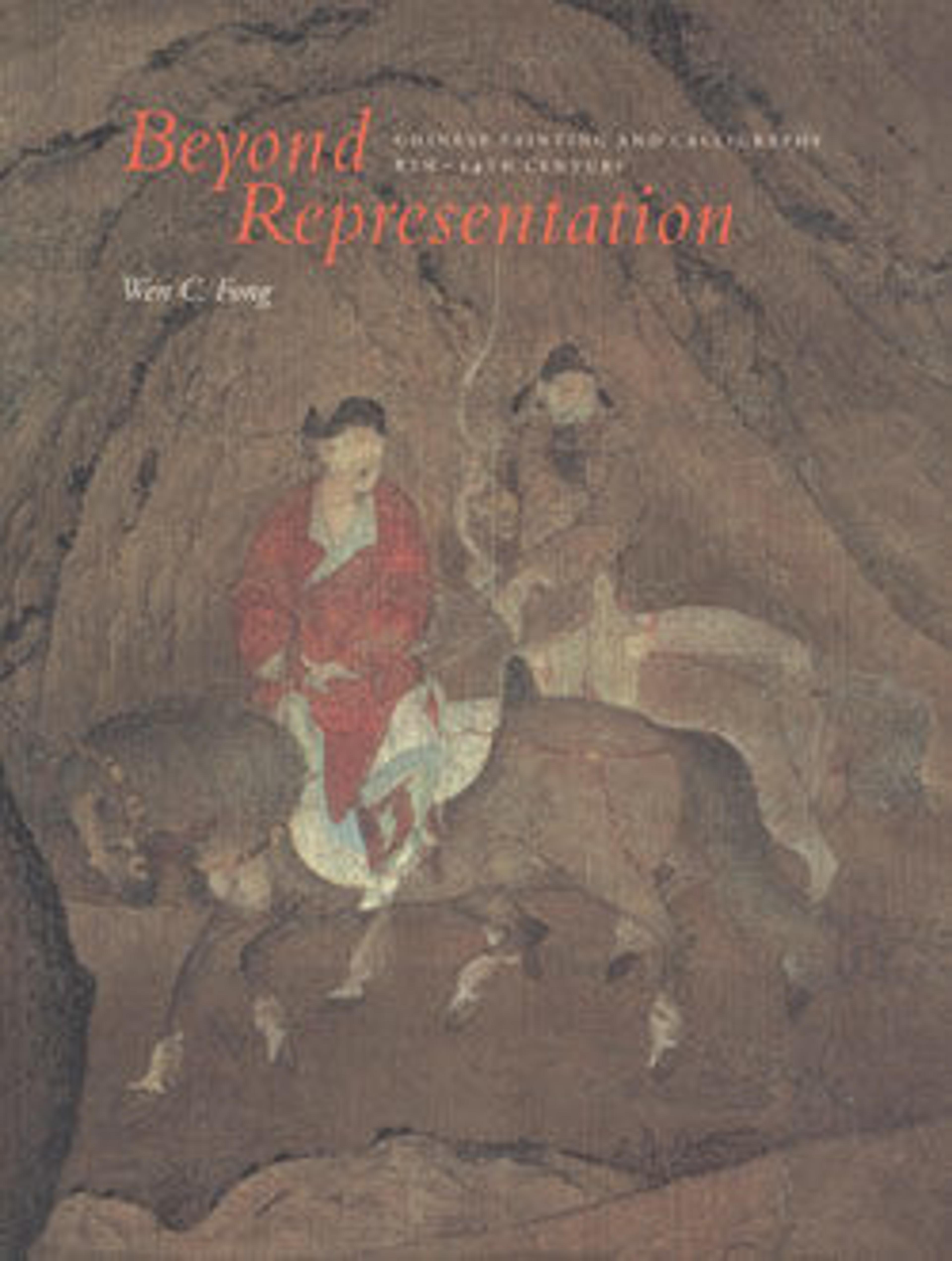The Pleasures of Fishes
Zhou Dongqing was a friend of Wen Tianxiang (1236–1283), the famous Song loyalist and a fellow native of Jiangsi Province. Zhou's painting was inspired by a passage from the Daoist classic Zhuangzi (ca. fourth century B.C.), in which Zhuangzi, strolling along a river, observes, "See how the minnows come out and dart around where they please! That's what fish really enjoy!" His companion Huizi remarks, "You're not a fish—how do you know what fish enjoy?" Zhuangzi replies, "You are not I, so how do you know I don't know what fish enjoy?"
In the inscription at the end of the painting the artist has written:
Not being fish, how do we know their happiness?
But we may express our feelings in our painting.
In order to probe the subtleties of the ordinary,
We must describe the indescribable.
Painted on paper instead of silk, the work's muted colors and flat patterns of pale inkwash evoke a mood of detachment and withdrawal, which Zhou's inscription reinforces. Born in Linjiang, not far from the Daoist center at Mount Longhu (Dragon Tiger Mountain), Zhou may have been strongly influenced by Daoism.
In the inscription at the end of the painting the artist has written:
Not being fish, how do we know their happiness?
But we may express our feelings in our painting.
In order to probe the subtleties of the ordinary,
We must describe the indescribable.
Painted on paper instead of silk, the work's muted colors and flat patterns of pale inkwash evoke a mood of detachment and withdrawal, which Zhou's inscription reinforces. Born in Linjiang, not far from the Daoist center at Mount Longhu (Dragon Tiger Mountain), Zhou may have been strongly influenced by Daoism.
Artwork Details
- 元 周東卿 魚樂圖 卷
- Title:The Pleasures of Fishes
- Artist:Zhou Dongqing (Chinese, active late 13th century)
- Period:Yuan dynasty (1271–1368)
- Date:dated 1291
- Culture:China
- Medium:Handscroll; ink and color on paper
- Dimensions:Image: 12 1/8 x 19 ft 4 in. (30.8 cm x 593.7 cm)
Overall with mounting: 12 5/8 x 441 3/4 in. (32.1 x 1122 cm) - Classification:Paintings
- Credit Line:From the Collection of A. W. Bahr, Purchase, Fletcher Fund, 1947
- Object Number:47.18.10
- Curatorial Department: Asian Art
Audio
7485. The Pleasures of Fishes
0:00
0:00
We're sorry, the transcript for this audio track is not available at this time. Please email info@metmuseum.org to request a transcript for this track.
More Artwork
Research Resources
The Met provides unparalleled resources for research and welcomes an international community of students and scholars. The Met's Open Access API is where creators and researchers can connect to the The Met collection. Open Access data and public domain images are available for unrestricted commercial and noncommercial use without permission or fee.
To request images under copyright and other restrictions, please use this Image Request form.
Feedback
We continue to research and examine historical and cultural context for objects in The Met collection. If you have comments or questions about this object record, please contact us using the form below. The Museum looks forward to receiving your comments.
